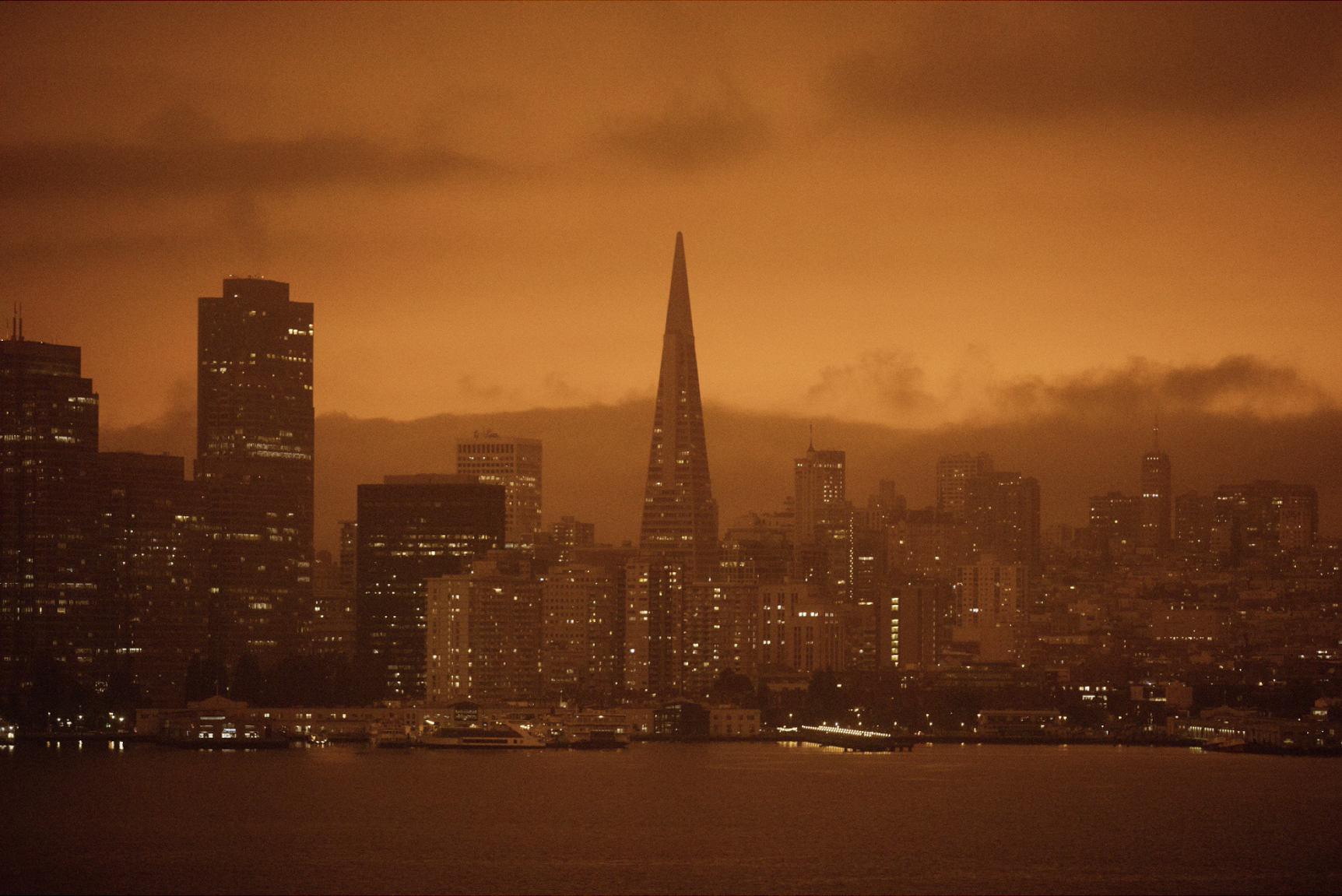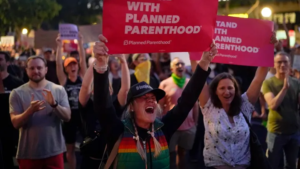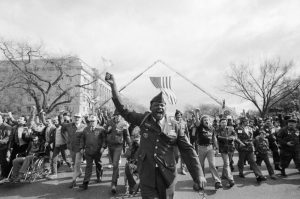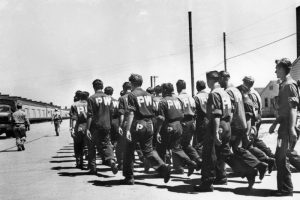The evangelist who is usually proselytizing on the corner of 24th Street and Mission Street in San Francisco has something new to say today.
“Mira al cielo!” he yells. Look at the sky.
In shops and on the streets of the city, the same theme emerges: Es la hora. It’s the hour — “the end of days,” as another passerby tells me.
The sky is impossible to ignore. When I woke up at 7:15 a.m., it felt like the middle of the night. Behind my pink curtains, there was only a dark orange glow. I checked in with my air quality app (around 60 AQI, so “moderate”), and then with my lungs (I’m feeling intimately aware of them, and each breath they take in, these days).
The sun never quite rose over the Bay Area on Wednesday: The 350,000-acre August Complex fire burning in Mendocino County and the nearly 900-acre Oak Fire north of Brooktrails shrouded San Francisco in a dense blanket of smoke and ash. Other wildfires raged throughout the West: the Bear Fire that started up north in Oroville, and dozens of others blazing in Oregon and Washington. The deep orange over San Francisco is being created by the smoke particles blasted high into the atmosphere, far above the morning fogs, which scatter blue or purple light waves, only letting the warmer, fiery hues through. As the hours go by, the sky darkens as gravity intervenes and the smoke descends closer to the surface of the city.
It looks just as apocalyptic as the street preacher suggests. Or like Arrakis, the desert planet of the science fiction novel Dune. (Today was, auspiciously, when the trailer for the new film version of the book was released.)
But as I wake to discover that the Bay Area has been transformed overnight into an alien movie set, I’m relieved to find that its air quality — which has been hazardous or at least pretty awful for days — has not worsened considerably. There’s no smell of barbecuing wilderness, only an eerie chill after a weekend of blazing, unseasonable heat. The sun can’t penetrate the blanket of smoke. (A blessing, of a sort, because many of us don’t have air conditioning.)
I’m a transplant to this region from the East Coast — seasonal wildfires are new to me. But this is not exactly normal to locals either. Climate change and record-breaking heat are exacerbating fire seasons across the West. This summer’s devastation canbe blamed in part on human carelessness — insanely, another gender reveal party trick gone wrong ignited the 7,000-acre El Dorado fire. But it’s also a testament to failed policy: The state has largely replacing controlled burns, a method of restoring balance to fire-prone ecosystems favored by Indigenous tribes, with fire-suppression tactics that cannot manage the supercharged blazes of the “Pyrocene Age.”
The coronavirus pandemic has its own role to play:When state prisoners were put on lockdown or released during Covid-19 outbreaks, California lost many of its incarcerated firefighters, who are unable to work in the field once they get out of jail. (A bill awaiting Governor Gavin Newsom’s signature would change that.)
These factors combined mean what’s worse this year is the sheer scale of the destruction. At 2.3 million acres so far, the West’s wildfires are 20 times the size of last year’s burns.
After taking blurry pictures through my apartment window, I walk around my neighborhood though the doomy noonday twilight, wearing a mask that I hope will keep me safe from the dual respiratory threats of smoke and Covid-19.
Jim Anaya, who’s out getting a coffee at Happy Donuts, tells me it’s the quiet that’s strange — from his home near Dolores Park he can’t hear any birds, or other animals. They must be “laying low,” he says.
The rest of the city is, too. At Valencia Farmer’s Market, Matt Hort says that business was slow at the store when he came in at 7 a.m. “This morning there was hardly anybody out on the street,” he said.
I’m wondering what this day is like for parents of young children. How do you explain an apocalypse to your kids?
Others gather despite the gloom. Omar Lima is hanging out around the corner from the market with a group of friends. They’re all older men — they’ve seen fires before, he says. But the sky has never looked like this. “This is like, out of the Bible almost,” he says. “It’s crazy.”
Lima’s friend, Marco Rodriguez, sings a line from a Marshall Tucker Band song: “Fire in the mountain, lightning in the air, gold in them hills, waiting for you there.” He blames the government for not learning from California’s Indigenous people. And he blames Pacific Gas and Electric Company for their shoddy wire maintenance, which has been the source of past fires. “Who’s leading who? The blind is leading the blind. The government has no respect for the land,” he said. “It’s the naiveness of the human beings. It’s capitalist greed.”
I take photographs of the sky, trying to capture the other-worldliness through my iPhone. I can’t, fully. Others wander about with the same idea. Social media has become a sea of blazing photographs of the Golden Gate Bridge and Sutro Tower, swathed in blood-orange light. The city and its residents aren’t facing a direct risk from the fires right now; our horror isn’t the kind felt by people in more rural communities, or in the Berkeley Hills, or by the 200,000 people across the West that have been displaced. It’s something else — the banality of standing around in the street, gaping at a smoldering sky without being imminently threatened by flames.
Still, there’s something about this cinematic scene — a spectacle that commands the attention of literally everyone who sees it — that is almost satisfying in its lack of subtlety. Climate change, like the “invisible enemy” of the coronavirus pandemic, has been a crisis that some Americans have found too easy to ignore. Now the sky itself is a manifestation of the reckoning to come. Is this what it takes?
I go home and make lunch. My throat feels tender — as the smoke settles, the air quality has now exceeded 100 AQI — but maybe that’s hypochondria talking. I call up an expert on how we’re supposed to be coping right now. Emanuel Maidenberg, a professor at the David Geffen School of Medicine at UCLA, studies the stress caused by natural disasters. When you are entirely surrounded by scenes of a catastrophe in progress, he tells me, “it’s hard to escape the presence of that threat … [The images are] an additional source of distress because you see it, which is not something that typically happens with other natural disasters.”
I’m wondering what this day is like for parents of young children. How do you explain an apocalypse to your kids?
“Kids typically deal with something like that similarly to how they were shown to deal with it in previous circumstances,” Maidenberg says. But what if there is no precedent?
For kids, as for adults, the best way to process chaos is by clinging to certainty, Maidenberg says: We all want clear, accurate information about real risks, and as much of it as possible. (That’s a lesson that, as the day’s other major storyline seems to illustrate, does not appear to resonate with all national leaders.) The problem is, in this case not even the experts have all the answers: “This is beyond the scope of our models so we rely on your reports!” the San Francisco Bay Area National Weather Service tweeted this morning.
Indeed, it’s beyond the scope of everyone’s models. But, as Bridget Read wrote in The Cut, “what is somehow more terrifying than [the fires’] escalation is how quickly we seem to be adapting to them.” It’s the phenomenon that The Atlantic’s Ed Yong, in his latest accounting of the U.S. failure to contain the coronavirus pandemic, has dubbed the “habituation of horror.” What some call numbness, others call resilience.
During my walk around the neighborhood, I ran into a toddler named Wren. The darkness he woke up to was confusing, said his mom, who asked not to be named. Soon, though, he settled into his regular routine. He and his mom went to the local fire station, as they do most days. Wren stood, rapt and smiling, looking at the fire truck parked in the station, ready for whatever lay ahead.




